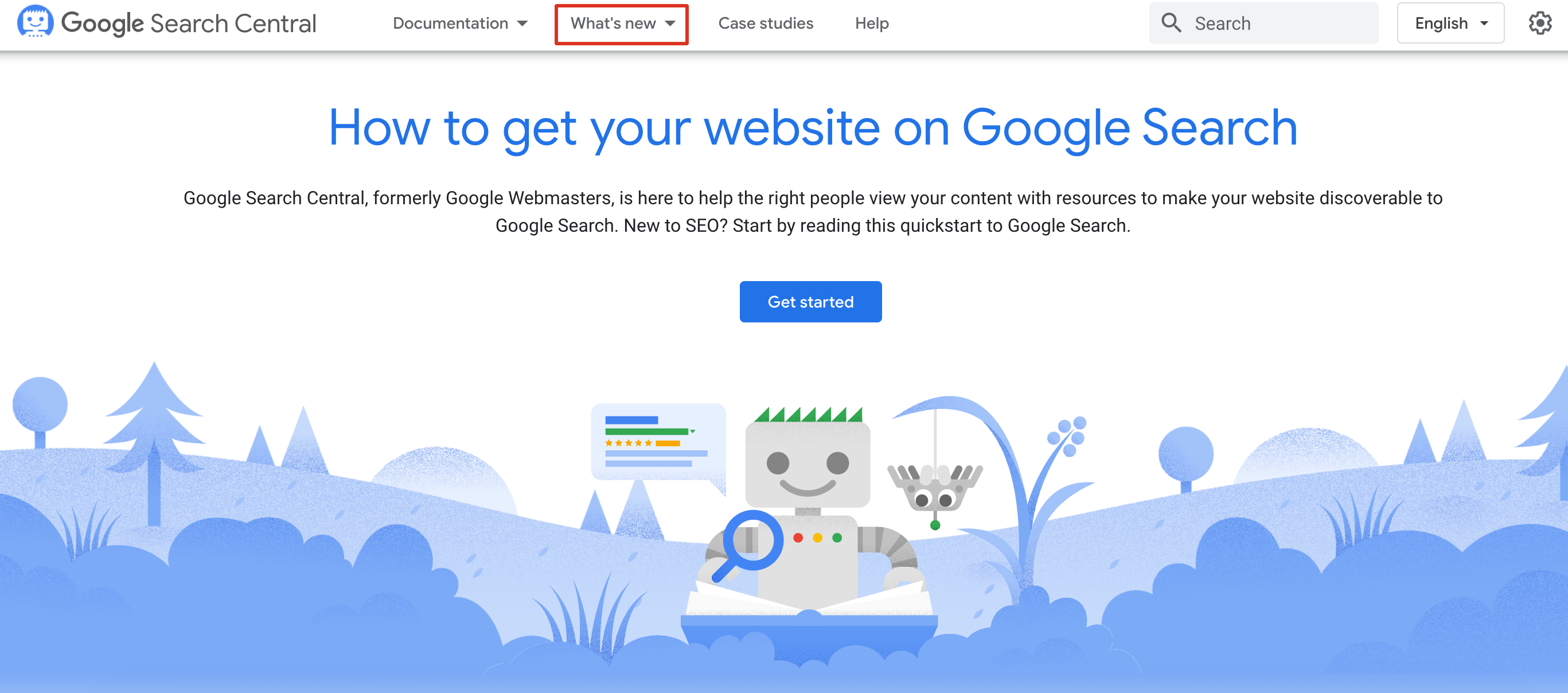Every day, the Google algorithm updates itself.
This actually happens more than 3,000 times a year, and some updates are obviously bigger and more impactful than others.
Remember how Mark Hanna describes the stock market in The Wolf of Wall Street?
“Nobody knows if a stock is going up, down, sideways, or moving in circles.”
I think the same applies to Google’s algorithms (when you’re not Google).
Rather than seeing these updates as unmanageable changes, you can view them as potential game-changers for your business in the international space.
With that said, you don’t have unlimited time and resources, so how can you focus on getting the most impactful optimizations into your International SEO roadmap?
In this post, we’ll focus on the most important recent updates and how you can prioritize your efforts.
Why Staying Current in International SEO is So Important
Even though we’re talking about an international roadmap, all types of SEO professionals may find this helpful.
The algorithm is universal, even though some things update faster in the U.S. than in other countries. It impacts SEO professionals of every country, niche, and experience level.
You need to follow news from the industry (which you are if you’re reading this — gold star!).
Staying up to date in International SEO is even more important, but also difficult given that different cultures and languages challenge both strategy and execution.
Being up to date is proactive; it gives you the opportunity to not only respond to updates but to get in position for what’s coming next.
When you’re doing SEO on an international level, your roadmap might include several countries and competitors.
It is particularly important to know if one area of your SEO organization will be affected but others won’t.
For example, we’ve heard much recently about the struggle between Australia and Google related to search restrictions.
If you’re doing SEO in Australia, you would definitely have been impacted and it would serve you well to stay on top of the issue.
As another example, a lot of international companies working in the YMYL (Your Money Your Life) industry may have different agencies connected to them in other countries, but this can be very dangerous if they don’t follow the same overall strategy.
Let’s say that you work in two countries on the same domain, with both /us and /uk. Teams in those two different countries need to make sure that they follow the same guidelines.
Therefore there should always be an overall SEO coordinator – a project manager – and then the country-based specialists working in every country.
Otherwise, you risk seeing one country doing great white-hat SEO with good digital PR while another country may be doing black hat SEO and buying scammy links (which can result in manual penalties).
How to Stay Updated
First of all, follow industry media such as Search Engine Journal (obviously).
Follow experts in the community and, of course, Google Search Central.

You probably can’t implement every new recommendation that comes along. You don’t have all the time in the world.
It’s all about prioritizing.
How many hours do you have and how long does it take to implement certain changes or adapt to certain updates for all of the ccTLDs on a site? It depends on the scale of the changes.
But by understanding your own or your client’s domain – and understanding what is most important for your audience – you’ll have a much better understanding of where you really need to pay attention in these updates.
Adapting Your International SEO Roadmap
As we turn the discussion to actually committing updates to your roadmap, let’s turn back time a bit to when Core Web Vitals were announced for the very first time.
Some people waited (and are still waiting) to focus here.
There are two reasons to prioritize and move on CWV optimization quickly:
- They were announced as part of the ranking factors.
- Knowing this will be a focus from Google, we know for sure that it’s a focus for users. Working on this immediately grows the strength and page experience of your site. This typically has a great correlation with meeting users’ expectations.
Core Web Vitals was mentioned early in 2020 and yet studies still show there are a lot of websites that haven’t optimized for these important metrics yet.
By being the first mover on important updates (and we know this one is important), you can be better positioned ahead of competitors to capitalize on the extra ranking boost this provides.
How to Prioritize International Search Optimizations
Obviously, you won’t know about updates before they’re either announced or rolled out for everyone else to see.
Therefore, I recommend that you follow industry updates and be aware of whether there any core updates to watch out for.
Further, plan for an SEO audit each month that may change based on the industry news.
Here, you can map out the most important updates related to your business.
If you’re a local business, focus on local search updates and new GMB features.
If you’re in ecommerce, prioritize updates related to category and product pages.
Based on your audit, take action if needed and plan future changes in your roadmap. If you need a good workflow for this, try tools like Trello or Google sheets.
Updates From February & How to Take Action?
In February 2021, we saw the following updates from Google (among others):
Changes in Core Web Vitals Reporting
Google made a small yet potentially impactful change to how Core Web Vitals are measured.
Google Search Console now also will show a “good” rating if the measurements simply meet the ideal thresholds, rather than coming in beneath them.
Look at your Core Web Vitals report once again (for all your markets if needed) and see how the report may have changed.
You might have better results than before and can take an item or two off your roadmap.
12 New Manual Penalties
Google introduced 12 new types of penalties based on Google News and Google Discover, which means that the penalties are not only related to Google search anymore.
Walk through the 12 different types of penalties and consider if you’re in the shooting zone in any of the countries in which you’re doing SEO.
Google Taking Action Against Inaccurate Pricing
Beginning April 6, Google will take action against sites that show different prices in the checkout than the price shown in Google Merchant Center.
If you have your products shown in Google Shopping, be sure that the price is the same in the checkout or you risk receiving a warning.
More Domain Info in Search Results
Google is adding more information about domains in search results to help searchers learn more about the sources. This will take the form of a three-dot icon in the top right corner.
Google will be sourcing the information from Wikipedia, which is why this could be a focus for your business – especially if you’re an international enterprise. Unfortunately, this can also exclude many smaller sites that do not have their own Wikipedia entries.
Updated Structured Data Requirements
Google has updated the structured data requirements for events, which affects the offers.priceCurrency property. This structured data makes it possible for event organizers to be discovered Google Search and Google Maps. It can show both physical and online events.
Now, you are required to state the currency of the price of a given event by using the 3-letter ISO currency code. If you are hosting events in multiple countries, this should be a part of your audit.
Google My Business Updates
Google recently added eight new features to focus on in local search.
This is an important area of focus for all businesses with a local presence, especially during the pandemic as restrictions may be changing fast and often.
Not only do you need to follow the new updates from Google on local, but you also need to update your existing listings if anything changes. This is if you want to be the best-shown result in your country.
Even though you may be international it’s more important than ever to also be local in every market – from everything in listings to the technical setup itself with TLDs and hreflangs.
You can also read more about this in my latest post, a checklist for international SEO.
Key Takeaways
As consumer behavior changes, so too does Google. As SEO professionals, we need to follow these changes in order to stay ahead of the competition.
Be prepared for ever-changing algorithms and learn to prioritize and adapt your roadmap.
If you are able to execute in several markets while doing ongoing analysis and strategy, you’ll succeed in international SEO.
Is it easy? No.
But by implementing the important updates every month in your international roadmap you will be at the very front of your industry.
More Resources:
- A Quick Guide to Getting Started in International SEO
- International SEO Guide for Ecommerce: Optimizing Your Online Store
- 5 Benefits of a Standardized Global URL Structure
Image Credits
All screenshots taken by author, March 2021






![AI Overviews: We Reverse-Engineered Them So You Don't Have To [+ What You Need To Do Next]](https://www.searchenginejournal.com/wp-content/uploads/2025/04/sidebar1x-455.png)